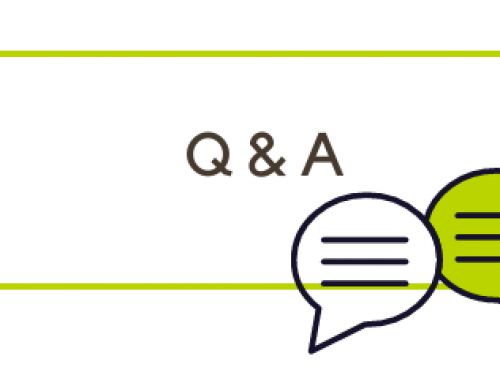Coronavirus Job Retention Scheme – What are the Rules?
This guidance is dated 30 April 2020. It summarises the provisions of Coronavirus Job Retention Scheme (the Scheme), first announced by the Government on 20 March 2020. The Scheme has been live since 20 April and enables all UK employers to access support to continue paying part of their employees’ salary for a wide range of employees whose jobs are affected by the coronavirus outbreak. It provides employers with the much needed financial support to avoid redundancies.
We are monitoring the position closely and will do our best to keep these bulletins updated as further information becomes available.
If anyone has any questions leading on from this guidance, they should contact a member of our Employment Team at emp@teacherstern.com.
1. The Basics
The Scheme is now live and is open to all UK employers with a UK bank account.
Employers can use the HMRC online portal to claim 80% of furloughed employees’ usual monthly wage costs, up to £2,500 a month, plus the associated Employer National Insurance contributions and minimum automatic enrolment employer pension contributions on that wage. While on furlough, the employee’s wage will be subject to usual income tax and other deductions. Employees will also pay automatic enrolment pension contributions on qualifying earnings.
Employers can claim under the Scheme for any employee who is not required to work because of the circumstances arising as a result of coronavirus or coronavirus disease. This is a much broader definition than appeared in the guidance the Government previously published and covers employees who refuse to work because of health and safety concerns or can’t work because of childcare responsibilities as well as those whose roles are redundant.
If an employee is working, you will not be able to claim reimbursement under the Scheme.
The Government has changed the eligibility date for employees, with employees who were on the payroll and for whom RTI submissions had been made to HMRC before 19 March now being eligible. Any staff who were made redundant after 28 February (the previous eligibility date) can be re-employed and furloughed provided RTI Submissions had been made before 28 February.
An employee can be furloughed for a minimum of 3 weeks. There is nothing prohibiting rotating furlough leave amongst employees, or from claiming multiple periods of furlough leave for the same employee, provided each employee is furloughed for a period of at least 3 weeks.
Employees’ employment rights are unchanged. This includes maternity rights, other parental rights, and rights against unfair dismissal.
2. Eligibility
Furloughed employees can be on any type of contract, including full-time employees, part-time employees, employees on agency contracts, employees on flexible or zero-hour contracts.
To be eligible, an employee cannot undertake work for or on behalf of the organisation while on furlough leave. A furloughed employee can, however, take part in volunteer work or training, as long as it does not provide services to or generate revenue for, or on behalf of your organisation.
Employers should discuss any changes to the employment contract with their staff and obtain their agreement. If sufficient numbers of staff are involved, it may be necessary to engage collective consultation processes to procure agreement to changes to terms of employment. When employers are making decisions in relation to the process, including deciding who to offer furlough to, equality and discrimination laws will apply in the usual way.
To be eligible under the Scheme, employers will need to write to the relevant employees and obtain their written agreement to being furloughed. A record of that agreement should be kept for 5 years.
Directors who pay themselves once a year (for example one-person businesses where most revenue is taken as dividends) are, subject to certain conditions, now also eligible to claim reimbursement under the Scheme.
Employees on sick leave or self-isolating should receive Statutory Sick Pay, but can be furloughed after any period of sick leave has ended. Employees who are shielding in line with public health guidance can be placed on furlough.
If an employee has more than one employer they can be furloughed for each job. Each job is separate, and the cap applies to each employer individually. There is no bar to an employee earning other income from another employer if they have more than one employer.
If your employee is eligible for Statutory Maternity Pay (SMP) or Maternity Allowance, the normal rules apply, and they are entitled to claim up to 39 weeks of statutory pay or allowance. If you offer enhanced (earnings related) contractual pay to women on Maternity Leave, this is included as wage costs that you can claim through the Scheme. The same principles apply where an employee qualifies for contractual adoption, paternity or shared parental pay. Employees on family leave can curtail leave early and be placed on furlough leave, either by giving the usual 8 weeks’ notice or agreeing a shorter period with their employer, which would enable the employer to benefit from the Scheme.
3. What can you claim?
The grant from HMRC will cover 80% of an employee’s regular wage up to £2,500 per month, plus the associated Employer National Insurance contributions and minimum automatic enrolment employer pension contributions with HMRC pledging to pay claims within 6 working days of submission.
Employer National Insurance Contributions and automatic enrolment contribution on any additional top-up salary will not be funded nor will any voluntary automatic enrolment contributions above the minimum mandatory employer contribution.
4. Where can I find more information?
Further information can be found at:
https://www.gov.uk/guidance/claim-for-wage-costs-through-the-coronavirus-job-retention-scheme#what-youll-need-to-make-a-claim
Author – Danielle Ramdel, Partner






